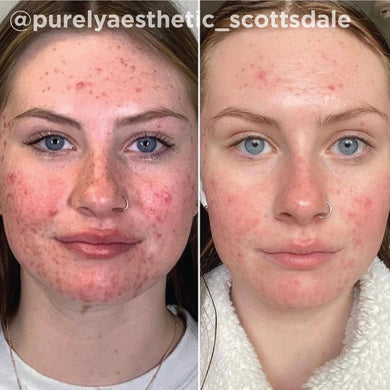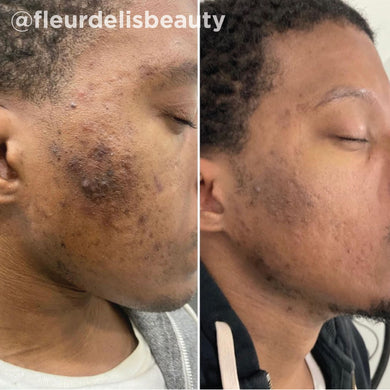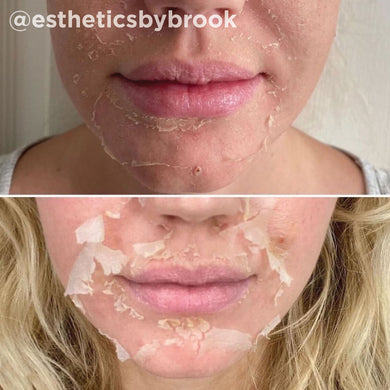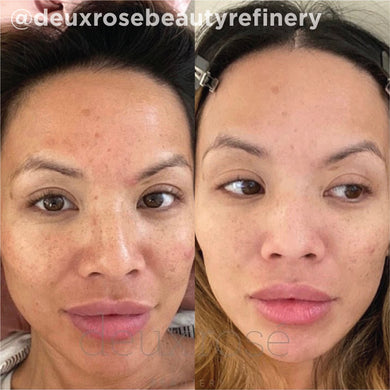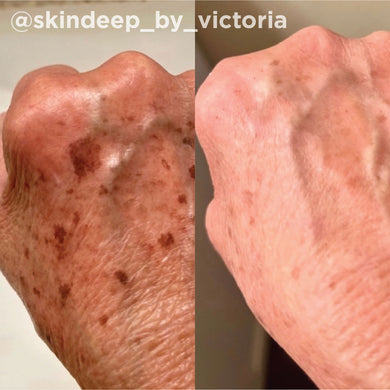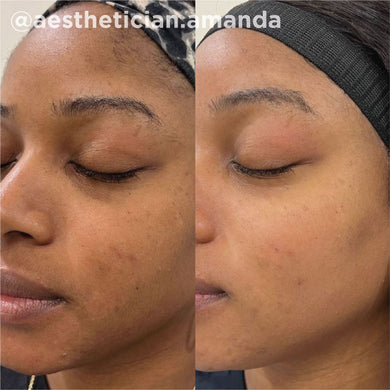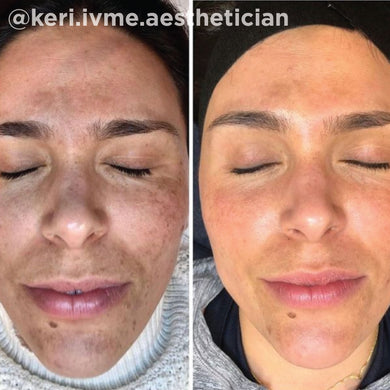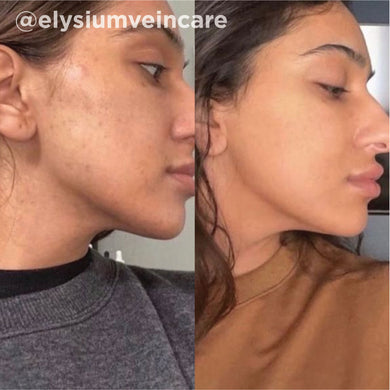Summertime Peeling
our skin is biologically designed to handle all seasons—from the hottest and most humid to the most frigid. With that said, there’s a common misconception that you should avoid getting chemical peels in the summer. Understandably so, as proper chemical peel aftercare states you should avoid prolonged sun exposure. However, with the proper sun protection and a little TLC, peeling in the summer is completely safe and effective, and can be even beneficial for your skin. Here, we take a deep dive on chemical peel safety, myths, and proper aftercare protocols.
The myth: “You can’t get a chemical peel in the summer”
The popular myth that you can’t get a chemical peel in the summer actually originates from this important aftercare protocol: avoid prolonged sun exposure during skin recovery. And because it’s typically hotter and sunnier in the summer, it’s a common misconception. However, the truth is that our skin is equipped to handle some roughness, and a little bit of sun exposure is perfectly safe for chemical peel recovery. That is, as long as you wear sunscreen and take proper sun protection measures (like wearing a hat), which is something we should be doing year-round anyways.
The truth: The summer season can be a great time for a peel
First, let’s start with what a chemical peel actually does to your skin. Chemical peels, like the award-winning VI Peel, induce skin regeneration and exfoliation, also known as skin cell turnover. The older we get, the slower the cell turnover is, and chemical peels help move along cell sloughing to prompt newer and fresher cells to the surface. The exfoliating acids found in chemical peels not only stimulate new cell generation, but do so in a way that avoids stimulating new melanin production. What can induce melanin production – and therefore leading to new dark spots and hyperpigmentation – actually come from improper post-peel care, like not wearing SPF or staying out in the sun for prolonged periods of time.
How you approach SPF and sun protection after a chemical peel should be no different, really, than any other day. The Skin Cancer Foundation says everyone from the age of 6 months over should wear sunscreen every day to shield against premature aging (including wrinkles and dark spots), sunburns, and the risk for skin cancer. So, as long as you are wearing your SPF and keeping your skin protected from the sun, your chemical peel results should not be affected, no matter the season.
But, what about chemical peels and the summer heat?
Yes, it is true that prolonged sun exposure and intense heat should be minimized when recovering from a chemical peel. But the key here is the word prolonged and intense. Lifestyle sun exposure, like running errands, driving in the car, and going for a walk, are all perfectly fine, as long as you protect your skin with SPF. When it comes to chemical peels and heat, we first need to understand the two different types of heat: environmental heat, like the summer’s warmer temps and internally generated heat, like exercise and saunas (e.g., anything that causes you to sweat). While it is true that externally generated heat can cause some sweating, recovering from a chemical peel is more about avoiding the internally generated heat that can cause excessive sweating. Still not convinced? Think of it this way – if you couldn’t get a chemical peel in warmer temps, technically you wouldn’t be able to get a chemical peel in states like California and Florida at all, where it’s sunny and warm regardless of the season. So unless you’re going on a months-long tropical escape (with prolonged sun exposure), your post-peel skin shouldn’t suffer any additional intensity during summer’s warm months.
Now for the surprise: Chemical peels may be even better when performed in the summer
More humidity in the summer air can be nature’s moisturizer that offsets dryness and irritation that can be triggered even by the gentlest chemical peel. Drier skin types, dehydrated skin types, and skin types that are prone to redness and sensitivity can actually benefit from having a little more oil, sweat, and moisture in the air during warmer months, creating the perfect canvas for a peel.
If the sun is up, the UV rays are out. This means that sun damage can happen any and every day of the year. But, most people do notice that their dark spots, hyperpigmentation, and uneven tone look a little more intense in the summer time. Skin care professionals always recommend treating a scar as soon as the wound is in the healing state and therefore more responsive to treatment (rather than weeks, months, or years later). The same goes for dark spots and discoloration. A summertime peel when the damage is fresh can cut off discoloration at the pass and prevent conditions like melasma from getting trapped in deeper layers of your skin.
It's also important to note: while it’s safe to peel in the summer, you should never get a chemical peel if your skin is sun-exposed or sunburned. So, if you just came back from a tropical vacation or had a sunny beach weekend, it’s best to wait until your skin has recovered before getting a peel. Not sure if your skin is ready? Your healthcare practitioner can help you determine this.
So, when is the best time for a chemical peel? Ultimately, this question is for you and your healthcare professional! However, we do know that there really isn’t a “best time.” Skincare maintenance is something that should be cared for all year long, no matter the season, and we recommend getting a peel at least once a quarter.
VI Peel offers a range of chemical peels that are ideal for treating sun damage on the face, décolleté, shoulders—and anywhere else you’d like a rejuvenating boost. If you’re struggling with any type of sun damage, melasma, or hyperpigmentation, opt for the VI Peel Precision Plus treatment, which is specifically formulated to combat and treat these conditions. Click here to find a trusted practitioner near you.
Sources:
https://www.skincancer.org/skin-cancer-prevention/sun-protection/sunscreen/
